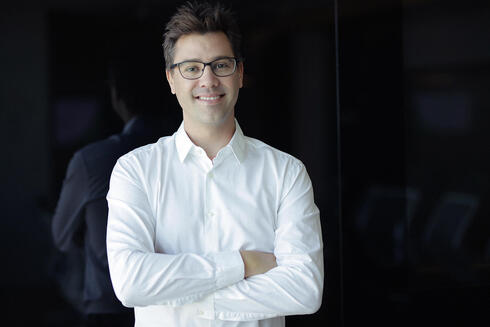
"We’re officially opening the 2025 tech IPO market": eToro CEO after $1.2B Nasdaq surge
Yoni Assia celebrates a 29% first-day pop and says the listing marks a turning point for fintech.
Fintech company eToro added $1.2 billion to its market value on its first day of trading on the Nasdaq, marking a triumphant IPO debut after two previous delays. The Israeli investment platform’s long-anticipated listing coincided with a broader market rebound, as Wall Street erased its losses from earlier in the year amid renewed enthusiasm for Bitcoin and tech stocks.
eToro shares surged 29% on their first day, giving the company a market capitalization of over $5 billion.
“We’re very excited about the bell-ringing ceremony at the Nasdaq. We decided to hold it the day after our debut,” said Yoni Assia, eToro’s CEO and co-founder. “We’ve always believed in eToro’s place in the capital markets. My first mentor in this world was Zvi Stepak, when I took a portfolio management course at 19. Now his son Avner is a director at eToro.”
Reflecting on the listing process, Assia called it “crazy for someone who loves the capital market,” noting that the company met with more than 180 investors during the roadshow. “We’re the first fintech company to go public since 2021, and the first tech company to IPO since the tariffs. We’re officially opening the 2025 technology IPO market.”
Assia also addressed the company’s aborted SPAC deal in 2021: “We were wise to stay private. In 2022, it became clear you couldn’t trade based on revenue multiples. I called that ‘the year of education,’ and I’m glad we stayed private and focused on profitability.”
eToro’s revenue model has historically been volatile, particularly during crypto booms. As noted in its prospectus, sharp swings in revenue and profit - largely driven by Bitcoin trading - can complicate long-term forecasting. But Assia said the market is more prepared now.
“People in the industry know our company and understand this business. Since the SPAC attempt, we’ve worked hard to diversify revenue. Even in 2023, a strong crypto year, only 25% of our revenue came from crypto. Analysts covering platforms like Robinhood or Coinbase know that long-term forecasts don’t apply the same way they do for most public companies.”
Related articles:
While most of eToro’s business is still outside the U.S., Assia emphasized the company’s intention to grow stateside, following regulatory progress with the SEC.
“We started in Europe, and 70% of our customers are still in Europe and the UK. We’ve expanded significantly in Asia and have meaningful operations in the UAE. In the U.S., we’ll roll out every product we can within regulatory limits. We’ve been cautious so far because the U.S. environment around crypto has been challenging. But I expect this year we’ll see real regulatory clarity, and major financial institutions will begin flourishing in the space. We’ll also see generational wealth start to shift into this new asset class.”
Assia said the IPO, and the exposure to major institutional investors in the U.S., will support eToro’s continued expansion. The company attracted a wide base of global investors during its roadshow.
“We met with the largest investment firms in the world, including BlackRock, which invested $100 million as an anchor. We also met trillion-dollar asset managers, where we aspire to be someday, and leading hedge funds, including repeat backers like Israel Englander’s Millennium. We've cultivated these relationships over time. Even after the SPAC fell through, we kept them updated regularly on our progress.”
e to stay private. In 2022, it became clear you couldn’t trade based on revenue multiples. I called that ‘the year of education,’ and I’m glad we stayed private and focused on profitability.”eToro’s revenue model has historically been volatile, particularly during crypto booms. As noted in its prospectus, sharp swings in revenue and profit - largely driven by Bitcoin trading - can complicate long-term forecasting. But Assia said the market is more prepared now.
“People in the industry know our company and understand this business. Since the SPAC attempt, we’ve worked hard to diversify revenue. Even in 2023, a strong crypto year, only 25% of our revenue came from crypto. Analysts covering platforms like Robinhood or Coinbase know that long-term forecasts don’t apply the same way they do for most public companies.”
Related articles:
While most of eToro’s business is still outside the U.S., Assia emphasized the company’s intention to grow stateside, following regulatory progress with the SEC.
“We started in Europe, and 70% of our customers are still in Europe and the UK. We’ve expanded significantly in Asia and have meaningful operations in the UAE. In the U.S., we’ll roll out every product we can within regulatory limits. We’ve been cautious so far because the U.S. environment around crypto has been challenging. But I expect this year we’ll see real regulatory clarity, and major financial institutions will begin flourishing in the space. We’ll also see generational wealth start to shift into this new asset class.”
Assia said the IPO, and the exposure to major institutional investors in the U.S., will support eToro’s continued expansion. The company attracted a wide base of global investors during its roadshow.
“We met with the largest investment firms in the world, including BlackRock, which invested $100 million as an anchor. We also met trillion-dollar asset managers, where we aspire to be someday, and leading hedge funds, including repeat backers like Israel Englander’s Millennium. We've cultivated these relationships over time. Even after the SPAC fell through, we kept them updated regularly on our progress.”
